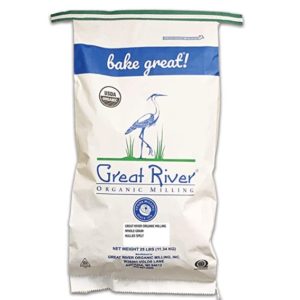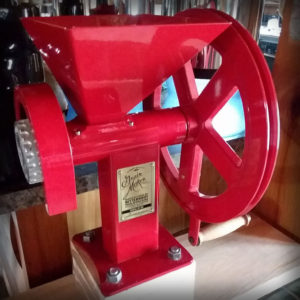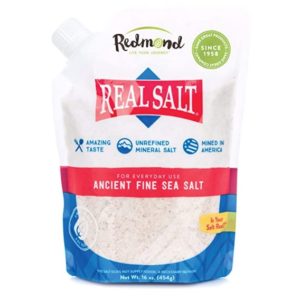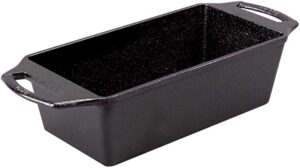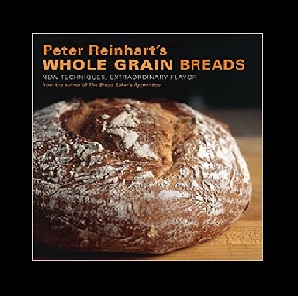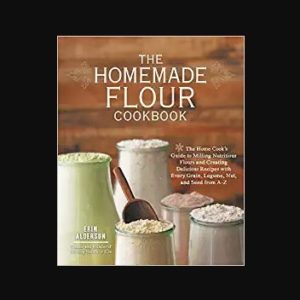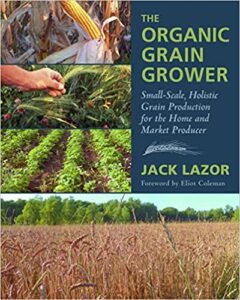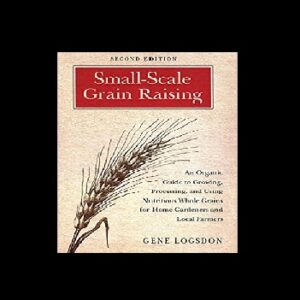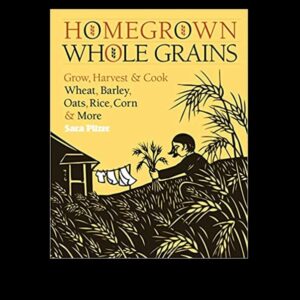Our Favorite Spelt Bread
Here are the main points that will be covered in this article:
Disclosure of Material Connection: Some of the links in this page or post may be “affiliate links”. This means that if you click on the link, Pioneer Mountain Homestead, LLC may receive an affiliate commission at no direct cost to you. Pioneer Mountain Homestead, LLC only recommends products or services that the owners, managers, or employees of Pioneer Mountain Homestead, LLC use or believe will add value to the readers of this website. This disclosure is made with the Federal Trade Commission’s 16 CFR, Part 255: “Guides Concerning the Use of Endorsements and Testimonials in Advertising.”
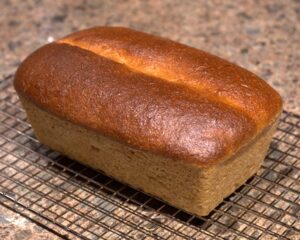
What is spelt?
For those that don’t know, spelt (botanical name: Triticum spelta) is a specialty grain and one of many varieties of wheat berries. It can be ground into flour and utilized similar to modern red or white wheat. Spelt has a hearty flavor; a tougher outer husk and larger, slenderer and more pointed, berry than red or white wheat; and less gluten than modern wheat. Spelt is higher in protein than white or red wheat, and has more fiber, complex carbohydrates, iron, and B and K vitamins. It is more water soluble than modern wheat and requires less kneading when used in yeast breads. Spelt flour may be used as a substitute for other flours, but be aware that it will most likely produce a smaller crumb than breads made with modern wheat flour. Spelt may be easier to digest than other forms of wheat and has been recommended to those with celiac disease or other sensitivities to gluten. Spelt is also referred to as farro grande.
Spelt flour was used to make matzo in the Old Testament. Spelt arrived in America around 1890 by Swiss and German immigrants. It was popular in the United States (mainly the Ohio area) for a few decades until around 1920. In the United States, it was known as spelz by the Census of Agriculture. In 1960, spelt was “rediscovered” as an alternative to commercial wheat by the organic farming community.
Why we like this Bread
Our main reason for loving spelt bread is the flavor. It has an earthy, nutty flavor. In addition, the following recipe is relatively easy with only six ingredients. It makes a great sandwich bread. We also enjoy this bread in the morning with tea or hot chocolate. It is exceptionally wonderful with butter and honey.
What are the ingredients?
Only six ingredients are needed for this bread. They are:
1-1/2 cups of goat milk (If you don’t have goat milk, use cow milk)
2-1/4 tsp. active dry yeast
4 cups fresh ground spelt flour (I grind the spelt berries into flour and sift it prior to using. You can also use purchased spelt flour or if you cannot find spelt berries, or try a whole wheat flour).
1 T. sugar (I use raw organic sugar. I have also substituted sugar with honey for a little variety).
1-1/2 tsp. salt (I use Redmond Real Salt).
4 T. soft butter (Sometimes I substitute with goat butter)
Step One – The Milk and Yeast
Begin by warming the milk until it is blood warm. (Around 100 degrees Fahrenheit). I typically don’t use a thermometer for this step. Just check the temperature of the milk by putting a drop or two of milk on your wrist. If it is just a little warm, then it is the right temperature. (For those who have bottle fed young children or animals, it is checked in the same manner as when checking heat temperature for bottle feedings).
Place the warm milk in a bowl and stir in the yeast. Let the mixture set aside for a few minutes. The mixture should get bubbly. This is how you know the yeast is working.
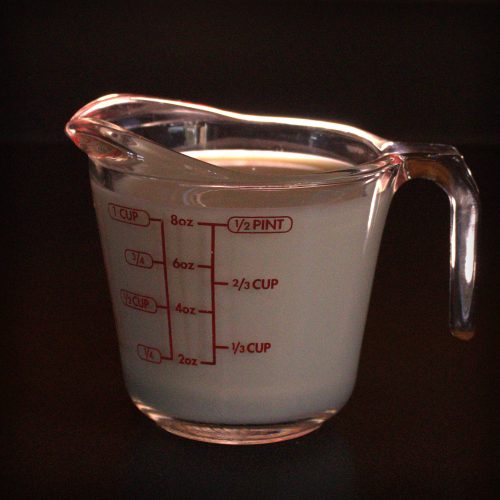
Step Two – Adding the Other Ingredients
Step Three – The First Rise
Transfer the dough to a bowl for the first rise. I use a stoneware bowl. I typically coat the dough with a little bit of olive or sunflower oil to keep the dough “skin” from getting dry. Cover the bowl with a kitchen towel and let the dough rise until double in size.
Step Four – The Second Rise
When the dough has about doubled in size, pound it down and shape into a loaf and place in a buttered or oiled loaf pan (I use cast iron loaf pans from Lodge). You may need to add a little flour at this point to aid in shaping the dough and to keep it from sticking to your fingers.
Let the dough rise again. I typically let my loaf rise in the unheated oven with a pan of water in the bottom of the oven that is allowed to evaporate. This gives the bread a nice moist environment and keeps it out of the way from other activities.
Step Five - Baking
When the loaf is ready to bake, remove it from the oven and preheat the oven to 350 degrees Fahrenheit. Leave the pan of water in the bottom of the oven (make sure you are using an oven safe pan). Return the loaf to the oven once preheated and bake for 40 to 45 minutes. The bread will be slightly brown when finished.
Remove the bread from the oven. Cool for a couple minutes in the loaf pan and then remove bread from the bread pan. Coat the exterior of the bread with butter and cool on a rack.
When cooled, slice the bread and enjoy.
Please Note – No Preservatives
If you make bread with fresh ground grains, it does not have preservatives and will mold much more quickly than breads made with preservatives. If I don’t anticipate using our bread within a day, I will store it in the refrigerator.
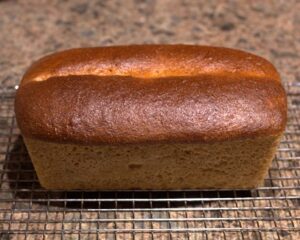
Let Us Know
If you make this bread, let me know what you think of the recipe. I also want to know if you have any suggestions to make the recipe better. I see recipes as guidelines, and I’m always experimenting with altering amounts of ingredients or substituting different ingredients to see what the result will be. I enjoy hearing about your experiences, too. -Bren
Thank you so much for your support!
We are full time homesteaders at Pioneer Mountain Homestead in the Appalachian Mountains of south-central Pennsylvania. We have a sawmill, produce garden, honeybees, layer hens, laying ducks, and goats. We provide boat and camper storage to nearby visitors of Raystown Lake and sell firewood and lumber in south central Pennsylvania. Our journey is to be as self-reliant as we can be; to live as much as we can from the resources we have at hand; to effectively be productive with as minimal environmental impact as possible; to raise food in an organic manner; and to give back to our community through education or demonstration. We are always learning, as well. Life is always an adventure! We enjoy learning from others and seeing what other people are doing as well. – Bren and Chuck
Alderson, Erin. The Homemade Flour Cookbook. Fair Winds Press, USA, 2014. ISBN: 978-1-59233-600-5
Lazor, Jack. The Organic Grain Grower. Chelsea Green Publishing, White River Junction, Vermont, 2013. ISBN: 978-1-60358-365-7
Logsdon, Gene. Small-Scale Grain Raising. Chelsea Green Publishing, White River Junction, Vermont, 2009. ISBN: 978-1-60358-077-9
Pitzer, Sara. Homegrown Whole Grains. Versa Press, USA, 2009. ISBN: 978-1-60342-153-9
Reinhart, Peter. Whole Grain Breads. Ten Speed Press, New York, 2007. ISBN: 978-1-58008-759-9
Pioneer Mountain Homestead
16477 Sharman Lane
James Creek, PA 16657
814-505-6426
"Embracing Everything Farm and Forest"
Disclosure of Material Connection: Some of the links in this page or post may be “affiliate links”. This means that if you click on the link, Pioneer Mountain Homestead, LLC may receive an affiliate commission at no direct cost to you. Pioneer Mountain Homestead, LLC only recommends products or services that the owners, managers, or employees of Pioneer Mountain Homestead, LLC use or believe will add value to the readers of this website. This disclosure is made with the Federal Trade Commission’s 16 CFR, Part 255: “Guides Concerning the Use of Endorsements and Testimonials in Advertising.”
